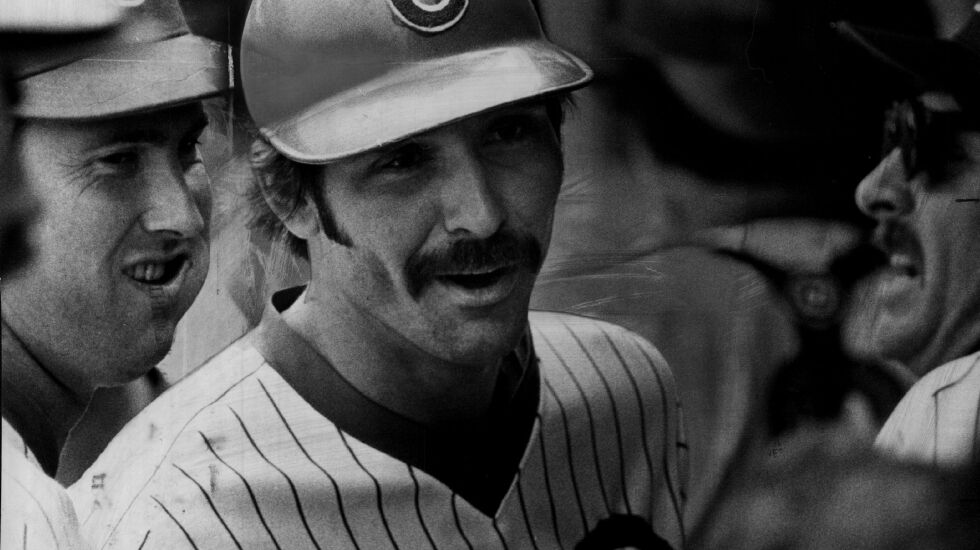
The 2023 Major League Baseball regular season just ended, and there were no 500-foot home runs. Shohei Ohtani slammed the longest homer in the majors this year, a 493-footer on June 30.
Just how prevalent is the 500-foot home run? Some distances are wild guesses, other homers probably benefited from a long roll. But there is a verifiable shot that went 530 feet in the air during an official game, was caught on tape and is measurable.
The average major league home run travels 400 feet. But there are stories of several super- bombs.
In 1987, Joey Meyer, a 6-3, 260-pound minor leaguer with the Denver Zephyrs, supposedly hit one 582 feet in the thin Denver air. Josh Gibson slammed a 580-footer that left Yankee Stadium in 1937, and the year before he launched one out of Belmar Memorial Field in New Jersey that landed at the local post office, a reported 600 feet.
Babe Ruth’s longest was perhaps a 587-footer at Tampa’s Plant Field during a 1919 pre-season game when he was still with Boston. At the 1971 All-Star Game in Detroit, Reggie Jackson crushed a spectacular shot credited at 539 feet.
Pirates slugger Willie Stargell is credited with one at 535 feet in 1978 and Adam Dunn two, including an alleged 535-foot blast in 2004 with the Diamondbacks. Babe Ruth supposedly hit one 575 feet at Detroit’s Navin Field (later called Tiger Stadium) in 1921. The Baseball Hall of Fame, in fact, does not recognize the Ruth homer as the longest. But it does recognize the original tape-measure home run hit by another Yankee.
The longest-ever hit by the prodigious Mickey Mantle exited Washington’s Griffith Stadium on April 17, 1953. The Baseball Hall of Fame regards this as the longest official home run in major league history. But was it? It allegedly landed 565 feet away.
The Yankees’ press secretary, Red Patterson, chased after it outside the stadium, then supposedly recorded the 565-foot distance with a tape measure, making it the original “tape-measure home run.” But did the ball really travel 565 feet? Patterson retrieved it from a boy who had already picked the ball up. Mantle also hit a spectacular blast that struck the latticework hanging from the roof of Yankee Stadium beyond the right field wall. Had it left the stadium, maybe it could have been the longest ever.
Among Barry Bonds’ record 73 home runs in 2001, none reached 500 feet. The true 500-footers are rare.
Physics of the ‘impossible?’
Noted Yale physicist Robert Adair, baseball fan and author of “The Physics of Baseball” calculated that hitting a pitched baseball 565 feet in the air is physically impossible.
Given the properties of the ball in those days, Mantle’s bat, aerodynamics, pitch speed, air temperature and a human power swing with optimum lift, Mantle’s tape-measure bomb has been calculated by computer algorithms at 506 feet, give or take a few. Regardless, it was awesome.
A German firm, Trackman, developed the Home Run Tracker using Doppler radar to measure exit velocity, launch angle and other properties to calculate how far every home run would go. It was first used by ESPN for the home run contest in July 2009. In 2015, all 30 major league parks had access to a Statcast system.
Various electronic estimates have added many more candidates for the tape-measure home run list, ironic since actual tape measures are no longer involved. During the Statcast era at baseball’s All-Star Home Run Derby, where pitchers and hitters are specifically trying to crush long balls in record numbers, the longest, so far, was Juan Soto’s 520-foot shot in 2021.
The Cubs’ Dave “King Kong” Kingman verifiably crushed a ball at least 530 feet in the air on May 17, 1979. The Kingman blast is preserved on video and can be seen sailing over Wrigley Field’s left field wall and striking the porch of the third house across Waveland Avenue.
It was Kingman’s third home run of the day, a breezy Cubs loss to the Phillies, 23-22. On May 11, 2000, the Cubs’ Glenallen Hill launched a high moon shot that also exited Wrigley over left field. It bounced off the roof of a three-plus story building across the street. The roof was 490-500 feet beyond home plate. But the Kingman ball actually landed farther away.
During the Statcast era, the longest at Wrigley was Kris Bryant’s 495-footer, which actually hit a video board 397 feet from home plate, with 98 more feet estimated without the obstruction. Did Kingman’s 530-foot moonshot best Mantle’s 565-footer? We’ll never know. Then again, Mantle’s blast probably didn’t go that far in the air either. But at least the Kingman shot is actually on tape, measurable and awesome.
Eldon Ham is a member of the faculty at IIT/Chicago-Kent College of Law, teaching sports, law and justice. He is the author of five books on the role of sports history in America.
The Sun-Times welcomes letters to the editor and op-eds. See our guidelines.
The views and opinions expressed by contributors are their own and do not necessarily reflect those of the Chicago Sun-Times or any of its affiliates.







